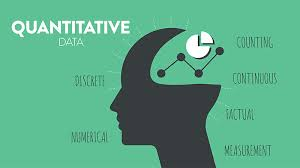When we talk about data, it is important to know that it exists in various forms and can be classified in different ways, particularly for useful analysis. Two of the most fundamental classifications consider whether the data type is based on discrete and numerate forms of data or opinion-based data. Let’s take a closer look.

What is quantitative data?
Quantitative data is data that is objective and can be quantified in some way, perhaps by counting, ordering, sorting, or assessing numerically. This type of ‘hard’ data is structured, discrete, and ready to be organised in different ways, using graphs, tables, numerate analysis, and so forth.
At the other end of the scale, you have qualitative data or ‘soft’ data, which is based on opinions. It often takes the form of open-ended responses, such as text, audio, or video. It can be used to gauge thoughts, opinions, preferences, and reviews.

How is quantitative data used?
A data collection company such as shepper.com will use quantitative data to establish trends, bottom-line results, and fixed-point information. This numerical or hard data is ready for analysis and can be organised in a way that supports decision-making. Its objective nature means it is fixed and ready to further measure with scales, baselines, and comparator data, such as an industry benchmark, to see what is working and what isn’t working.
An example of quantitative data could be sales for a new product line. By gathering metrics that relate to the sales – order volumes, profit margins, order frequency, repeat orders, channel of purchase, and so forth – the sales team can assess whether the new product has been a success against earlier projections or goals.
How might qualitative data be used?
Qualitative data might be used to assess the success of a new brand launch by gathering customer perceptions and opinions to assess its impact in the target market. In this way, soft data can be used to add colour, context and nuance to hard data.
Businesses will invariably collect both types of data through business systems and comprehensive information-gathering efforts.
